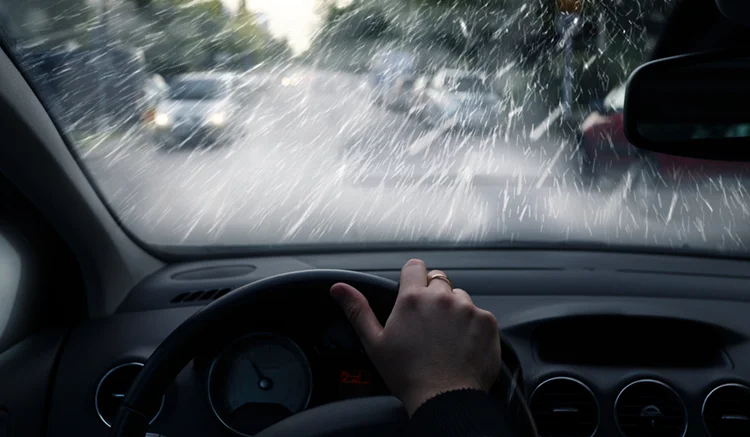
Statistics from the Federal Highway Administration reveal a stunning relationship between accidents and bad weather, especially rain. Nearly one in four vehicular crashes in the U.S. is weather-related, and approximately three-quarters of those accidents occur on pavement that is wet from rain that is falling or has recently fallen. These crashes take more than 5,000 lives and injure hundreds of thousands every year.
Some of the threats to drivers that stem from rainy weather are more obvious than others. Reduced visibility is the primary hindrance, related either to the presence of water on the windshield or the fogging of the front, rear and side windows associated with the increased humidity and temperature changes that come with rainfall. Windshield wipers can actually decrease visibility by distracting the driver and by the fact that they can increase the accumulation of water in certain areas. Additionally, wipers will never clean the entire windshield. The water on the windows can also create a glare, especially at night, making it difficult to judge distance and direction.
Another obvious threat is the loss of tire traction when running on a wet pavement. A less obvious threat is the oil that accumulates on the pavement during periods of dry weather and, when released by rain, can mix with the water and affect traction while a vehicle is accelerating or braking. Running through puddles of water can be hazardous to the driver who does it and to pedestrians and other motorists.
Rain can slow and increase traffic congestion, which can in turn increase the risk of collisions. Heavy rain is often accompanied by wind, which can bring down telephone wires, tree branches and even structures, and these can become a hazard to driving if they fall onto a roadway.
Motorists can follow a few simple rules to enhance their safety when driving in spring showers. Most importantly, they should reduce their speeds in rain, on rain-slick pavement, and when the traffic congestion is heavier due to bad weather. Display extra vigilance for other vehicles, pedestrians, flooded areas and obstructions. They should also maintain their vehicles to assure that brakes and tires are in good condition, wiper blades are pliable not brittle or cracked, and outside lights function properly.
Accidents can occur any time of the year and in any type of weather, and they are not always the fault of the drivers involved. Those who are victims of accidents should contact a personal injury lawyer, who can help you with everything from getting the proper medical care to handling your settlement with the insurance adjuster.